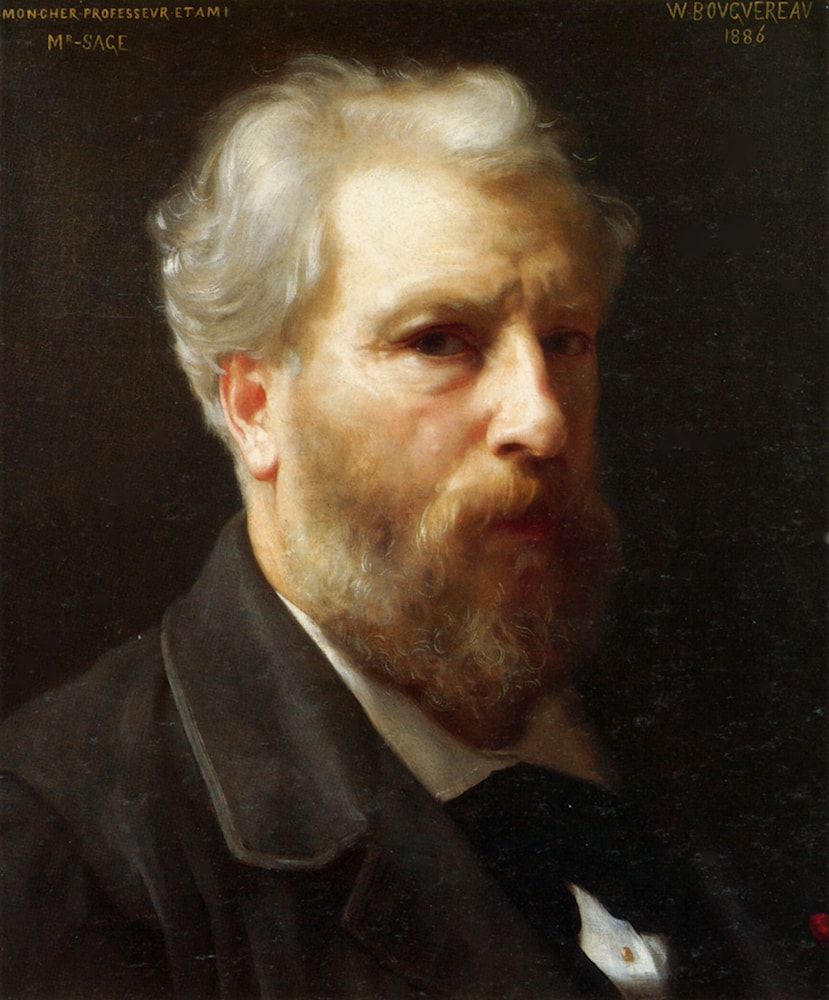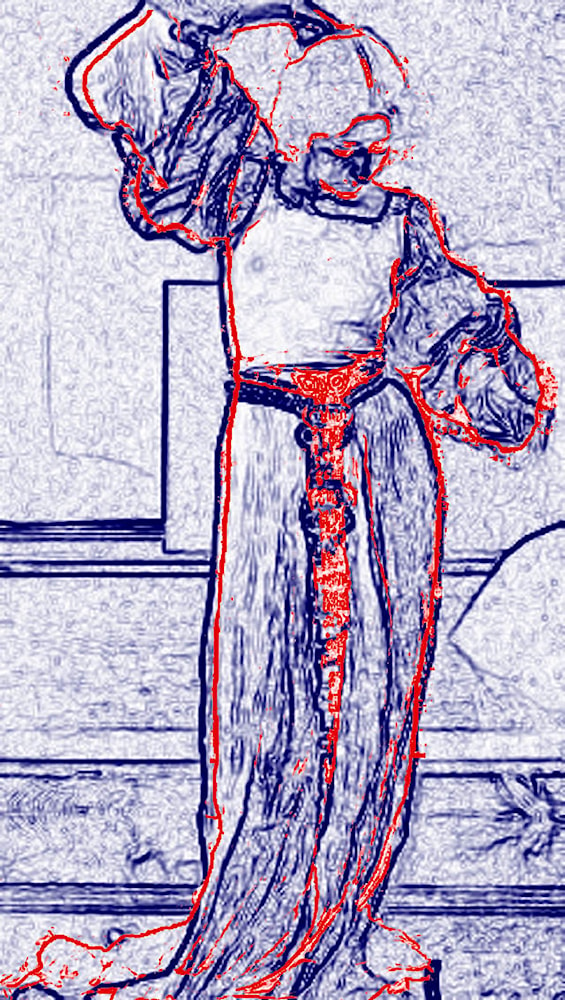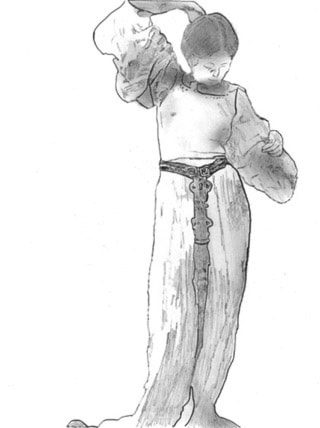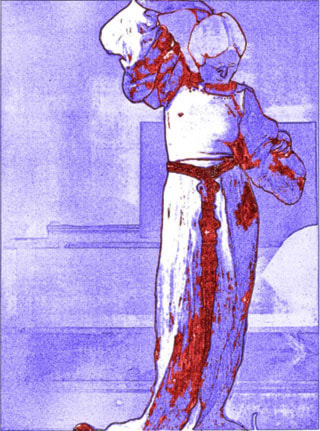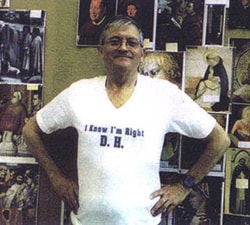Why David Hockney Should Not Be Taken Seriously

Published on 1 January, 2003
In David Hockney's 2001 book Secret Knowledge: Rediscovering the Lost Techniques of the Old Masters, the author proposes a strange theory. He claims that the Old Masters didn't really know how to draw and paint realistic images by direct observation, memory, or imagination. Instead Hockney claims they used the same method Hockney uses when he wants to create realistic images: using a projector and tracing the image. If the intellectual state of the art world were healthy, this kind of nonsense wouldn't be more than a curiosity. Unfortunately the hucksterism, taste for fashion, and lack of skill in the academic art community have conspired to create a strange gullibility that makes ideas more attractive and "popular" the more obviously absurd they are. In order to dispel this kind of gullibility I have decided to outline the reasons why any thinking person should reject Hockney's theory in this article.
In general, I have two reasons for rejecting Hockney's conclusions. The first is that even on his own terms his arguments don't demonstrate that his conclusions are true. The second is that there is ample counter-evidence against Hockney's claims. Perhaps he counts on most people not being aware of the facts or being too uncomfortable in trusting their own knowledge. Perhaps he is so poorly informed about how real artists do their work that he genuinely has no idea how they do their work. Either way, nobody should take his theory seriously.
What is Hockney saying and how does he attempt to make his "proof"? What are the problems with his analysis?
Hockney claims that the Old Masters couldn't really draw and paint realistic images and that the improvements in image quality over time (particularly in the Renaissance and the 19th century) are attributable to the use of successively improved optical devices such as the "camera obscura" and "camera lucida".
The camera obscura (which means "dark room") is not a photographic device of the kind we are familiar with today. It is a box (or a room) with all light sealed out except for a small pinhole which admits light and this projects an image of what is outside on the opposite side of the box (upside down and backwards of course). As a child you may have played with devices like this called "pinhole cameras".
The principle behind the camera obscura was known at least as far back as 300 BC when Aristotle wrote about seeing crescent-shaped shadows created by spaces between leaves and through holes in a sieve during an eclipse. He also wrote:
Light is passed through a small hole made in a room enclosed by all sides. On the opposite wall to the hole an image will be formed of what is facing the room.
In 1490 Leonardo da Vinci wrote the first "modern" detailed description of one in his notebooks:
Who would believe that so small a space could contain the image of all the universe? O mighty process! What talent can avail to penetrate a nature such as these? What tongue will it be that can unfold so great a wonder? Verily, none! This it is that guides the human discourse to the considering of divine things. Here the figures, here the colors, here all the images of every part of the universe are contracted to a point. O what a point is so marvelous!
The existence of this kind of device was well-known and hardly much of a "secret" thereafter since plenty of published books contained descriptions of how to build one. Below is one of the earliest known published drawings of a camera obscura being used to observe a solar eclipse in Gemma Frisius's De radio astronomico et geometrico liber, 1558.
In addition to these two devices, Hockney also proposed that a similar device (one which to my knowledge has never been named or mentioned in early writings as a drawing aid) using a concave mirror to project an image which can be traced (much like a camera obscura would). Hockney seems to be particularly fascinated with this device (he uses a cheap shaving mirror in his "experiments"), even though there's no evidence that such a mirror existed in the Renaissance era. They just didn't have the technology necessary to make a good quality mirror of the right specifications. In his book he seems to alternate between these three kinds of devices often without being very specific, but that is the least of his problems.
Of course before the 19th century there were no photographic plates to expose inside such a box, so according to Hockney, the Old Masters sat inside their boxes or dark rooms with pinholes in the walls and traced the images they saw there in the dark rather than using the methods of observation, design, proportion, etc. that they claimed to have used.
A camera lucida (which means "light room") is essentially a prism on a stick. It was invented in 1809 by Dr. William Wollaston, and was explicitly intended as an aid to drawing from the start. An artist looks through the prism at his drawing surface and sees both the paper (and his hand and pencil) and a superimposed image of whatever is in front of the prism. This is a photograph of a 19th century camera lucida attached to a drawing table.
This is more difficult to use than the camera obscura since every time the artist moves his eye the images shift a little bit, but the principle in general is the same in both cases. The artist can see the subject superimposed on the drawing surface as he traces over it. Both devices have been known about for a long time and many inquisitive artists have experimented with them to make sketches. That is neither a secret nor anything new. What is new is Hockney's claim that this is the "secret" of how the Old Masters made all of their great paintings and that they didn't have any other way of doing so.
One interesting fact about these drawing devices is that one of the earliest creators of photography, Fox Talbot, originally became interested in the idea of photography because he found it impossible to make acceptably realistic drawings using a camera lucida or camera obscura. He wrote:
[In] October, 1833, I was amusing myself on the lovely shores of the Lake of Como in Italy, taking sketches with a camera lucida, or rather, I should say, attempting to make them; but with the smallest possible amount of success...
After various fruitless attempts I laid aside the instrument and came to the conclusion that its use required a previous knowledge of drawing which unfortunately I did not possess. I then thought of trying again a method which I had tried many years before. This method was to take a camera obscura and to throw the image of the objects on a piece of paper in its focus - fairy pictures, creations of a moment, and destined as rapidly to fade away ...
It was during these thoughts that the idea occurred to me. .. how charming it would be if it were possible to cause these natural images to imprint themselves durably and remain fixed on the paper!
So it would be more accurate to say that the failure of optical aids to allow the creation of realistic drawings led to the development of photography rather than that the successes of optical aids led to the creation of realistic drawings.
Underlying most of Hockney's points is the claim, either implicit or explicit, that it's impossible to actually paint realistic-looking images by observation, memory, or imagination. Again and again, he asserts that conventional drawing and painting (what he calls "eyeballing it") are too difficult for anyone to do and therefore some alternate explanation is needed to understand how realistic-looking images are made. This claim is particularly strange since the idea that the Old Masters couldn't draw and paint realistic images is one of Hockney's most controversial conclusions. It is also one of his key premises. So he is seriously begging the question here. It is certainly the case that Hockney himself cannot "eyeball" his way into creating a realistic image, but that is hardly proof that Rembrandt , Titian , Ingres , and Bouguereau couldn't. Hockney doesn't present any examples of his "eyeballed" drawings in his book(he can't draw much better than the average high school student can doodle) but he did "demonstrate" some drawings of faces using optical aids and they are uniformly pretty terrible. For example, these are some drawings Hockney made using optical aids of some guards at the National Museum...


He seems to not be capable of recognizing the failings of his drawings since he puts them next to some drawings by genuine artists of past centuries and claims that this is evidence that they used the same methods as he does. To me, they look rather different, and Hockney's drawings look much worse in general. You can decide for yourself.
Hockney in previous years often used "photo mosaics" as mainstays of his "art". To make these, he would take a conventional camera around a scene, photographing everything as a close-up, and then arrange the photos into a collage.
As he makes his argument that the Old Masters couldn't draw and paint realistic images, he continues to attribute his "technique" to them by asserting that not only did they use optical aids for all of their modeling, but that they also used a mosaic effect to create large multi-figure paintings as well. He claims that they did this by using a projector to capture each element of the scene and then putting the parts together like a jigsaw puzzle. This seems to be a pattern for Hockney, identifying any instance of great technique by better artists as merely a more primitive version of what he has been doing for years. I will have more to say about his motivations later on. His determination to "discover" that the Old Masters were exactly like him all along is evident throughout his argument.
The "Great Wall"
Hockney claims that the first observation that sparked his "insight" happened as he examined the paintings of Jean-Auguste-Dominque Ingres . He claimed that they were just too perfect to have been painted by "eyeballing it" and he started to wonder if perhaps Ingres had used optical aids to accomplish this, and if so perhaps that was how all of the great artists did their work. It seems relevant to consider that this is how Hockney has always made his "art", by photographing things and pasting the photos together, or tracing optical images from a projector of one kind or another, and that he never learned how to make realistic drawings and paintings any other way. He has primarily made his way in life by associating his crude paintings and photos with pseudo-intellectual controversies like this one.
The book explains that part of Hockney's "method" of identifying when it was that artists started using optical aids was to paste up images from various eras on a wall (which he refers to as his "Great Wall") in chronological order and take note of when the quality of the images changed over time.
Not surprisingly, he noticed that image quality has generally improved over time from the middle ages until the beginning of the modernist period. This was particularly true around the Renaissance, and again in the 19th century. No doubt substantial improvements in realism did occur over the centuries, but Hockney was determined to find something more in this progression than a series of improvements in skills, tools, and materials.
As I see it, this observation proves nothing about the use of optical aids at all. The fact that a great deal of scientific and engineering knowledge developed in those eras is very well known. This advancement included both specifically image-making knowledge (about perspective, geometry, etc.) and also more practical knowledge about things like pigments, lighting, and metallurgy, as well as physical wellbeing, sanitation, and political and intellectual freedom. All of these improvements helped the artists and everyone else do their work better. Looking at any sphere of human activity in the West from food preparation to clothing to transportation to warfare we can see similar jumps in quality at about the same times as Hockney claims to have discovered the "proof" that artists started tracing images from a camera obscura. He doesn't try to explain this (he doesn't even mention the fact). He just dismisses without analysis the possibility that there could be any other explanation on the grounds that "eyeballing it" is impossible and that a "better" explanation is necessary.
Hockney Takes All Evidence as Evidence of his Theory
Another line of argument Hockney uses is to identify cases of "distortion" in paintings and drawings and claim that it must have arisen from the use of optical aids. Whether this is a matter of lines that aren't straight, lines that are too straight, fuzziness around the edges or bits that are too sharp, or changes in proportion from one part of the painting to another, he invariably ascribes this as evidence of the use of optical aids. What is odd about this is that no matter what evidence may appear, this approach always justifies the conclusion that optical aids were used. Accurate shapes are taken as proof of the use of optical aids and departures from perfection also prove the use of optical aids. I wonder what Hockney might imagine evidence of his theory being false might look like. He doesn't really address that question in his "proofs". With Hockney, all roads lead to the same conclusion.
Hockney Didn't Demonstrate Painting, Only Drawing
In his "experiments", Hockney didn't actually go through the process he claims that the Old Masters did... going from a model, to a drawing, to a finished painting. This is probably because he knows that the process would either yield some kind of "paint by numbers" feel to the finished work (rather than the finely layered effects we see in actual paintings by the masters), or that it would be practically impossible to do if the painting were made directly using optical aids. First, these aids rely on the substrate on which images are projected being white. Once a layer of darker paint is applied, it becomes difficult to see the image. This would have been particularly difficult in eras with less than perfect optics and glass, and before the availability of bright artificial light sources. Worse yet, it becomes very difficult to see colors and their relationships when the projection is done on a multi-colored screen (as any half-painted paper or canvas would be). If the original sketch were made and then covered by a layer of paint, the artist would have to constantly be re-projecting the image back onto the partially painted canvas in order to get the next level of detail incorporated into the painting. That would't have worked very well, especially for dark-colored paintings and for subjects illuminated by dim light sources.
At a New York University conference discussing Hockney's theories, he was asked why the book did not show any paintings generated by this method. His reply was that he had tried painting within his camera obscura, but had abandoned the effort "within ten minutes" because it was far too impractical! This might give most people pause, but not Hockney. He just restricts his experimental drawings to pencil on white paper and fails to explain how the Old Masters might have gone from pencil sketches to finished paintings or to explain how such a process might have worked. Aside from the fact that this constitutes a serious lack of proof of Hockney's arguments, it also points to a problem with his explanation of motivation. While Hockney claims that the use of optical tools is the only possible explanation for the quality of the paintings we see from history, he also claims that even if it were possible to "eyeball it", optical devices would be such tremendous time-savers that they would have to have been used as a matter of mere expediency. That makes it doubly strange that he can't seem to manage to paint even one decent realistic painting using the methods he ascribes to the Old Masters, and both he and numerous others have described the process as so tedious that they abandon it almost immediately.
Counter-Evidence
Much of the case Hockney tries to make is based on nothing more than "selective evidence". In other words, he sifts through large quantities of data and extracts all of the evidence that seems to point in the direction of his predetermined conclusion and then discards all the rest. Let's consider just a few bits of counter-evidence Hockney neglects to address (or even acknowledge).
1. Contemporary Artists Prove Hockney's Core Premise Wrong
Many contemporary artists use traditional techniques to draw and paint very well and they don't use optical aids. There are dozens of ateliers around the United States that teach the same methods employed by the Old Masters and we don't have to guess about the existence of "secret" methods or whether it is possible for them to "eyeball it". These "New Masters" have studied the actual methods of the Old Masters and they practice them every day. The explanation that it is impossible for anyone to "eyeball it" becomes pretty flimsy when you consider that people are in fact "eyeballing it" every day and with excellent results too. It is not the case that only a few contemporary painters are capable after many years of practice to draw a convincing face. Mere students can learn to do it better than Hockney can in a fairly short time, so if the Old Masters indeed were incapable of making realistic-looking drawings as Hockney maintains then he is saying that they were much worse at drawing than contemporary art students are. In any event, a single counter-example of this kind invalidates Hockney's claim that it was impossible for the Old Masters to draw and paint accurately, and thus his search for a "better" explanation is left unjustified.
Here are some examples of a few contemporary works that are known not to have been created with optical aids.
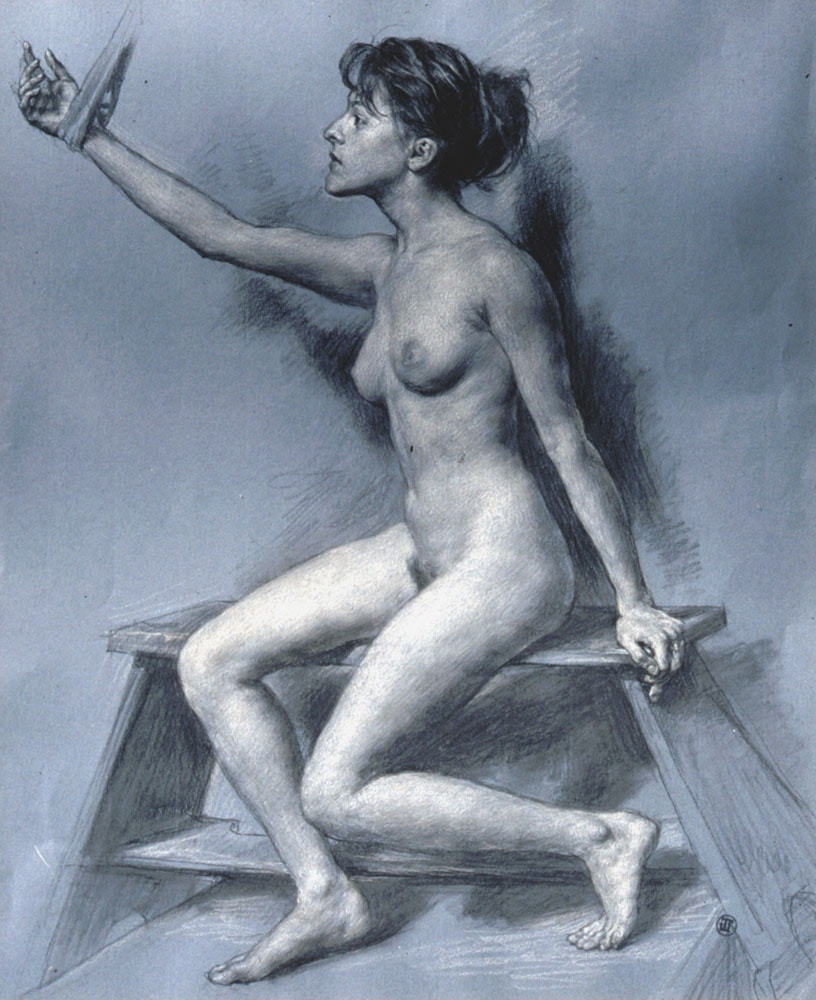
We can even see photographs of some of these cases showing that there's no camera obscura nearby...
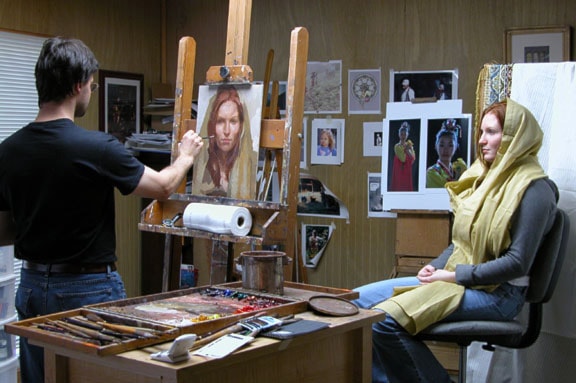
A few artists have even made it easy to see how realistic paintings can be made by posting step by step photographic records on the Internet for educational purposes. For example, Tony Ryder has prepared a very detailed step-by-step online demonstration of how to make a highly realistic portrait that leaves no question as to whether it is possible and how. And another fine artist Scott Burdick has posted a whole series of similar step-by-step demonstrations on his website.
Not only have contemporary artists documented what they have done, but contemporary artists also have written about their general methods and demonstrated in detail how they go about doing their business. For example Ted Jacobs has developed a Dictionary of Human Form that explains how to make accurate drawings of the human form in a broad variety of poses. Would all of these people spend all of this time to conduct an elaborate hoax as Hockney claims? Hockney's explanation for some lack of evidence and counter-evidence from the past is that medieval artists might have feared being burned as witches for making images with lenses and mirrors. How does he explain contemporary artists who publish information on how they do their work? He doesn't.
Hockney dismisses all evidence from past centuries that clearly indicates that artists weren't using optical aids on the grounds that they actively hiding their "secrets" by falsifying evidence. It is not as easy to dismiss the living artists who can prove that they work in the way that Hockney claims is "impossible". It's possible that Hockney is just so cut off from the genuine art world that he doesn't know that such artists even exist, but I think it is more likely that he just ignores the existence of these artists because if he were to examine what they do he would have to drop his premise and conclusion, that it is impossible to draw and paint as they do. His attitude here is very much like that of conspiracy theorists, who upon discovering a lack of evidence to support their theories. Rather than abandon their theory, they imagine a powerful conspiracy to hide or fake the evidence, so that a lack of evidence and an abundance of counter-evidence supposedly bolsters their overall theory rather than undermining it.
2. Direct Evidence of the Methods of the Old Masters
Today's ateliers are not something new. They constitute the present incarnation of an unbroken chain of students and masters stretching back to the Renaissance and beyond. Pre-20th century painters wrote books and taught classes on how they drew and painted, and none mentioned using optical aids as their primary way of drawing and painting or as anything other than a curiosity. These teachings and books still exist and Hockney could have examined them in order to discover the "secret" of how the Old Masters actually did their work. Instead, he merely selected the few bits of writing that mentioned optical devices and pretended that the rest didn't exist, claiming that the artists lied about their methods, perhaps to avoid being burned as witches. This is quite unconvincing, particularly given that many of the painters he claims couldn't paint lived in the 19th century when there was no chance of their being condemned as witches.
The techniques of the Old Masters are not lost at all, nor have they ever been "secrets". Ateliers exist that teach the same methods as described above, and their methods have survived in book form, so we don't have to guess about how their work was done or how the contemporary realists do their work. Here are just a few quick examples:
- The Painter in Oil by Daniel Burleigh Parkhurst (a student of Bouguereau)
- The Artist's Complete Guide to Figure Drawing by Tony Ryder
- 1art.com has some good practical information provided online by Alexei Antonov
- Mark Steven Walker explains a great deal of technical detail about how Bouguereau in particular made his paintings as well.
- Julie Heyneman (a student of John Singer Sargent ) provides a detailed account of how John Singer Sargent taught his students and how he made paintings.
- Harold Speed wrote a comprehensive book on how to draw realistic (and most importantly, artistic) images called The Science and Practice of Drawing
- Sir Charles Lock Eastlake wrote Methods and Materials of Painting of the Great Schools and Masters in the mid-19th century detailing the way realistic paintings were made in each era of history, and it's still available today for anyone interested in learning how it was done
How these paintings were made was no more "secret" than the recipe for making concrete, how to make a traffic signal, or how to make vodka. In fact, it's probably easier to find the information about the methods of the Old Masters than about these other more mundane things because there are prominent schools all over the world eager to teach anyone who will come near how it is done. Of course Hockney didn't visit such schools searching for the "secrets", he just allowed his "intuition" to lead him elsewhere.
Hockney had no need to engage in flights of fantasy in order to discover how realist painters do their work, the information isn't secret. It just involves learning some skills that take a while to produce great results. His arguments didn't consist of any recognition of these common understandings of how the Old Masters made their art. He must either have never heard of these alternative "secrets" or he just decided to dismiss them as "impossible" without a shred of proof other than his own inability or unwillingness to learn them.
3. Reports From Observers and Photographs
There is abundant direct evidence of how the Old Masters did their work both from students and models (few reported seeing optical aids of any kind, or their common use). For those in the 19th century there are even photographs of them doing their work. For example, here we have some photographs of William Bouguereau at work...
Clearly, Bouguereau here is not using any optical aids. He is painting, using the same techniques he taught to his students, and the same ones he learned from his teachers before him.
The inside of an artist's studio was a common subject for student painters (and it still is) and it gives us a look at what people were doing. Now Hockney would have us believe that this is all a massive disinformation campaign on the part of sneaky artists trying to keep their "true methods" a secret, but you can decide for yourself. The drawing below was done by Jean-Henri Cless of David's studio where he taught others (such as Cless himself and Ingres ) to draw and paint. I don't see any camera obscura there, just a high window admitting natural light and students working diligently at easels.
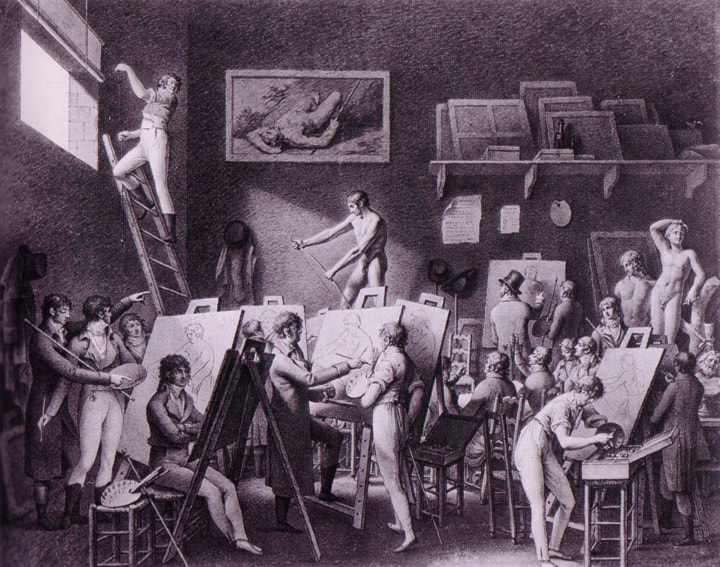
4. Alternate Explanations for Changes
One area where Hockney made a valid observation is that around the Renaissance there was a significant jump in the quality of paintings and drawings (and another one in the early 19th century). There were indeed significant improvements at those times, but Hockney claims that the use of optical devices is the only possible explanation of this. Historical evidence however provides a broad range of pretty obvious alternatives. In a brief article like this I can only show a few examples of proof that new methods of improving the techniques of painting and drawing became available at those times. A little Googling can quickly provide you with a mountain of additional evidence if you need further convincing.
One key discovery of the Renaissance was a dramatic improvement in our understanding of mathematical and geometric concepts, particularly in projective geometry. Not only is it clear that these concepts came to be known around that time, but it is clear from books written at the time that this knowledge was being applied to the creation of drawings and paintings.
These and thousands of other such drawings make it abundantly clear that these artists were discovering, using, and sharing information about geometric calculations as an aid to making more realistic images in ways that would not have been possible in earlier eras.
Another important area of improvement around the Renaissance was a more detailed understanding of anatomy. In the Dark Ages, cutting up corpses and examining skeletons to learn how they functioned was considered an abomination that was likely to get one accused of witchcraft. By the Renaissance however, it was possible for artists and scientists to investigate such matters and apply their knowledge to creating more realistic art. For example, this drawing from Leonardo da Vinci's notebooks shows anatomical detail that would have been impossible to investigate in previous eras:
These developments are of course not sufficient by themselves to explain the improvements in realism after the close of the Dark Ages. Every aspect of life from clothing and sanitation to political and intellectual freedom improved considerably and it should come as no surprise that like every other aspect of life, quality in the arts improved as well. Hockney makes no effort to measure what degree of improvement might have been as a result of optical tools relative to these others. He doesn't really mention them as competing factors at all, he just assumes that all of the changes that happened happened because of the use of optical devices.
5. Studies, Incomplete Works, and Technical Analysis
We can see the methods of many artists through an examination of the studies, incomplete works, and rough sketches that they produced before they started their final renderings. Not only do many of these offer clear evidence of having been produced without optical aids, but these preparations would have been unnecessary or even an impediment if the artist were merely copying an optical image.
Using Bouguereau as an example again, here we can see a few of the studies he made before attempting a finished painting. Bouguereau's technique involved detailed studies to successively refine his designs until they were perfect and ready to be rendered in the final painting. Here is an example showing a series of preliminary sketches and the final result, his masterpiece Le Ravissement de Psyche (The Abduction of Psyche).
This clearly shows a progression of successively more detailed versions of the same image, with successively smaller changes being made at each stage. If it was accomplished by tracing an image made by an optical aid, the details would be immediately and easily available without a lot of successive refinements and development as we can see through these studies. We can also see here that Bouguereau modeled portions of his models (such as the legs) that would not be visible in the final painting. This is necessary in order to understand more thoroughly why the fabric would fold this way or that, but completely unnecessary if it were just being copied with an optical aid since the optical image would take care of all such calculations automatically.
Beyond those issues, how would one go about making something like this using an optical device given that the bodies are in a physically impossible position? The positions of the limbs and the tension of the muscles clearly indicate that the figures are flying, not standing or dangling from a wire in front of a camera obscura.
Bouguereau left us a quite a few studies showing his work in progress and even copies of finished works, often at different scales from the original. Would Hockney have us believe that Bouguereau did all of this work just to fool us into thinking that he was "eyeballing it"? Bouguereau was very energetic in his activities, not just as a painter, but also as a teacher. He wasn't the least bit secretive about how he created his images. In fact, he founded a new academy in order to teach his techniques more widely. Hockney is just not interested in the facts if they don't support his theory.
One of the visual examples Hockney used in his book was a Bouguereau painting called Le Vague (The Wave). In addition to the painting, we also have a study Bouguereau made in preparation for the finished work.
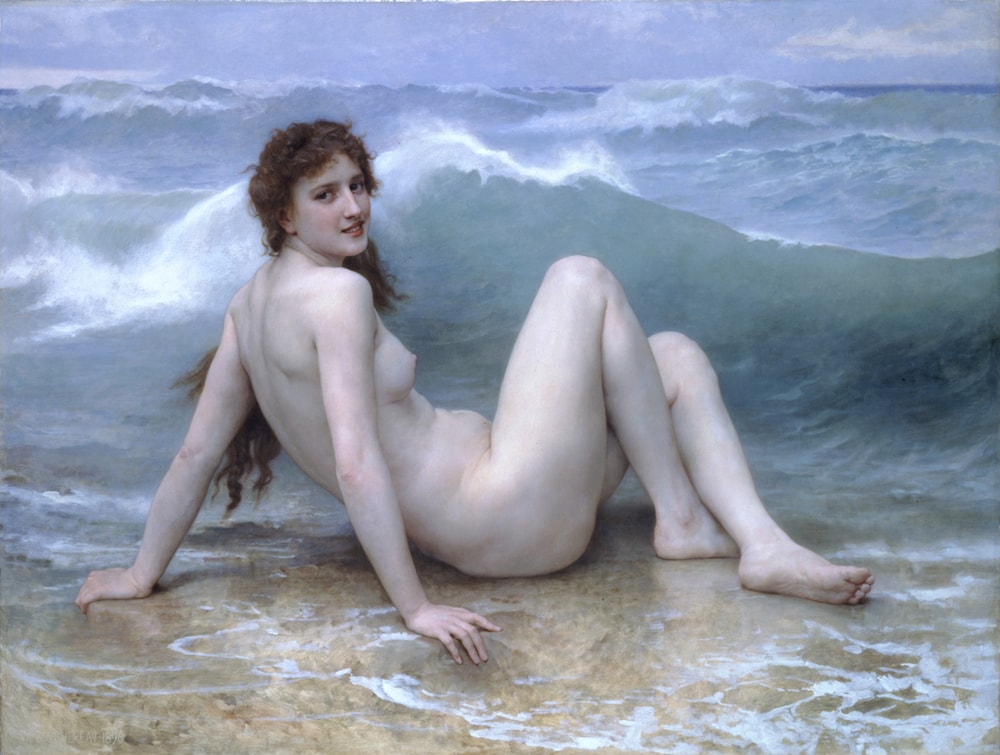
Clearly, this was a study made in preparation for the final painting, but why would that be necessary if he was just tracing the pattern using some optical aid? It is also interesting to notice that the composition of the final painting is a bit different from the study. Notice how Bouguereau draws our attention to the face by placing the highest contrast areas (the white/blue-green surf and the dark reddish hair) next to one another on a line right behind the face? Notice how the change in hair style accentuates this effect? Notice how the expression on the face is a bit different from the one in the painting, mainly by being a little less distinct? Clearly, this wasn't just an arbitrary tracing of a girl on a table with the "projection" of a wave behind her, it was a meticulously planned image, developed in stages by Bouguereau who used live models and painted them without optical aids.
Hockney's strange comment about the wave being a "back projection" (page 195) raises an obvious question... A projection of what and with what? Hockney claims that this must have been a back projection though he has no explanation of what that would even have meant in the context of technologies available in Bouguereau's day or why it "must" have been one. Clearly it couldn't have been a live optical aid since waves don't stand still while you sketch them or paint them. Perhaps he meant that he photographed a wave, blew it up and pasted it to a wall behind his model? Would that have even helped give him a natural-looking wave that met his exact compositional needs as the one in the painting does? I don't think so.
To the right are a couple of examples of pencil studies Bouguereau did in preparation for some of his other paintings. Bouguereau would make sketches of his models' bodies and more detailed drawings of their hands and faces to get his design just right in preparation for the final rendering. Why would he do this if he was just tracing the final images from a camera obscura? If he traced these images too, how would he transfer them to the final paintings? Hockney neither recognizes these issues in his book, nor does he offer an explanation for these studies. Perhaps he thinks they were made merely to fool us into thinking that the artists knew how to draw and paint?
Below is another Bouguereau study, this time for La Vierge aux Anges (Virgin with Angels). In this case we can see planning in the form and position not of critical lines that are crisp and clear(as you would get from a tracing a projection), but rather general shapes and colors. It is worth noticing that these are remarkably accurate in their position and shape, but missing in detail. One would expect that if they were made my starting with some optical device the artist would have taken close notice of critical detailed points (high contrast curves like the nose and the pupils of the eyes for example) which could be used to align and refine the position and shapes of elements in absence of the ability to draw and paint accurately. Instead what we can see here is clearly the work of someone who can paint generally accurate summaries lacking fine details and how such a vague pattern can be converted into a polished finished painting.

Clearly this didn't come about by tracing images from a camera obscura and it wasn't created by someone who didn't know how to draw realistic images without optical aids. He built up the final polished image by successive refinements, not by copying details from an optical aid and then filling in the gaps.
In many cases artists changed the paintings after they were done or while they were in progress, and we can see this using X-rays. This allows us to see how things changed as works were polished. We can also see many instances of incomplete works that allow us to look at the technique the artists used in mid-process as well. For example, below we can see a partially finished Maxfield Parrish painting. Parrish originally finished this painting with a figure in it. When he and his model/mistress had a falling out, he removed her from the painting by sanding the paint away and started re-painting the right side of the work from scratch.

In this case we can see some portions of the completely finished painting on the left, and the beginning bits of the repainting on the right. Notice that you can't see any pencil lines through the translucent blue glaze or around it either. Parrish painted with transparent glazes building layer after layer of glazes so that the light reflected from the bright white background through many layers of glaze. This would absolutely prohibit the kind of method that Hockney describes. First, no pencil lines would be possible because Parrish didn't use opaque paints that would cover them up. Second, this process took a lot of time and it would be impossible to capture a "quick impression" as Hockney describes since each successive phase of sanding, painting, drying, sealing, and painting again would take many hours during which the painting was moved, lighting sources (such as the sun in outdoor scenes) would change, and models would move in ways that would ruin an optical image he might have been trying to capture. Parrish painted hundreds of highly realistic pictures using transparent and translucent paints and it would have been impossible for him to have done so using the method Hockney describes.
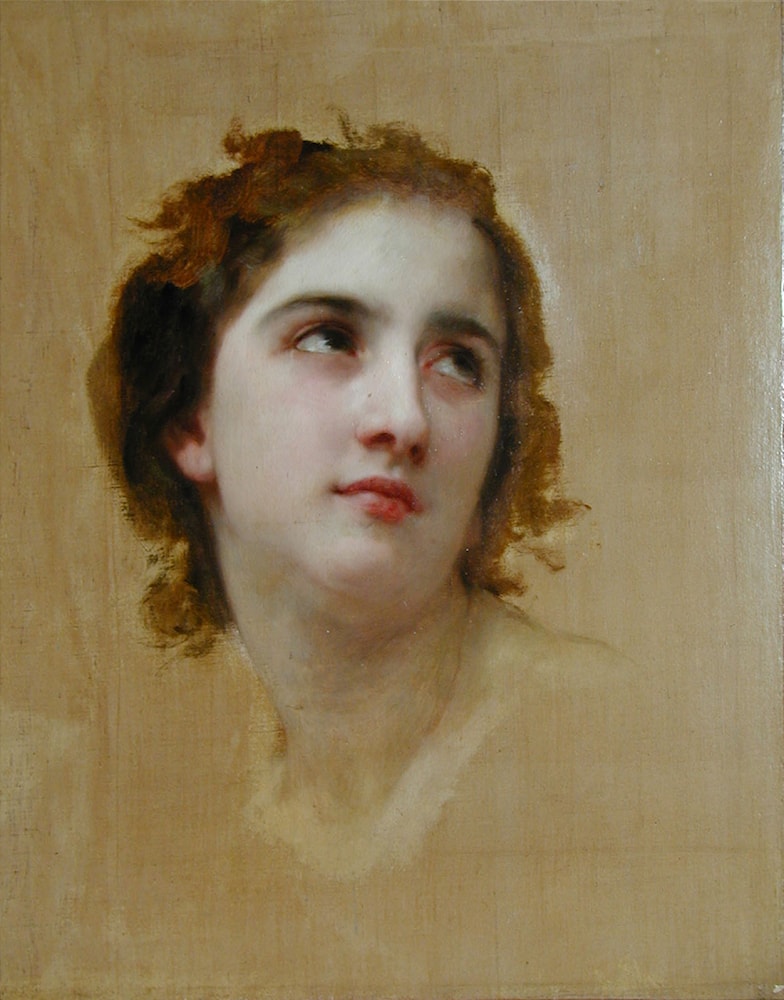
To the right is an example of an incomplete Bouguereau painting. If you look carefully, especially around the eyes you can see the layering of the paint with each line separating one area from another covering the patterns underneath. This painting is nothing special in this regard, but the unfinished nature of it makes this all the more evident. It is worth noting that this kind of layered structure would be particularly difficult to create using Hockney's method since as each layer of paint is applied, it would obscure the projected light or pencil marks and make it harder to see subtleties of line and shade. It is clear that skin was painted first, the eyes, nose, mouth, and hair were painted in layer after layer. Seeing an image projected onto the paint would be impossible, as would getting the model to sit perfectly still for the whole process. Even breathing would cause the image to move a little bit. Beyond that, many of the features that make this image so life-like have to do not just with the lines and edges, but the changes in color over the surface of the skin. Projecting colored light onto colored paint wouldn't really have helped Bouguereau to get this right, especially if he was doing it in a darkened room. As light levels drop, we stop using the cone cells in the retina (the ones that give rise to color vision) and start using rod cells which respond better to low levels of light. Rod cells can't distinguish one color from another very well (at all really), so an artist using a pre-20th century projector would lose the ability to perceive color very well and be unable to paint subtle color images accurately. It is also worth noting that the whole painting was done against a rather dark brown background. Dark backgrounds are a poor choice as a screen on which to project dim images. It is bad enough that the partially painted bits of the canvas would have obscured the patterns and colors, but a dark foundation like this one would have make it all by impossible to use a projected image.
The question of background colors raises an interesting question about studies and academic drawings. These were commonly done on colored papers in order to allow for a greater apparent contrast between the pencil marks and chalk highlights, and were not in general caused by limitations in the ability to produce white papers. If these studies and drawings were being used with a projector why not have them be white so the image would appear most cleanly?
In the case of the Prud'hon drawing to the right, we can see a typical dark grey paper which would have served as a poor screen against which to project an image. This particular drawing also has an interesting paper extension at the top, which was added by the artist when he realized that he needed just a little more room to draw the hair. Would this kind of mistake been possible if the model was just being traced? That the head was a little too high would have been apparent immediately and a quick move or the adjustment to the device or the model would have fixed this easily. That such an obvious mistake was made casts additional doubt as to whether this drawing could have ever been made as a projection.
To the left is an even more clear example of the use of dark paper and an overall dark image, also from Prud'hon.
Consider why Prud'hon would have made something like this. Since it is merely a study, there's no particular reason to use such dark blue paper and also no reason to darken most of the image further with charcoal if he was using an optical tool since that would completely obscure any image being projected onto the dark or black paper. Even if it were possible to make out the image against such a dark background, why bother since this was just a study? For finished drawings one might imagine that a darker background might be worth putting up with if the artistic effect were sufficient to justify it, but in a study? Clearly this study was not accomplished by use of optical tools.
Here is another unfinished painting, in this case by Sir Lawrence Alma-Tadema .
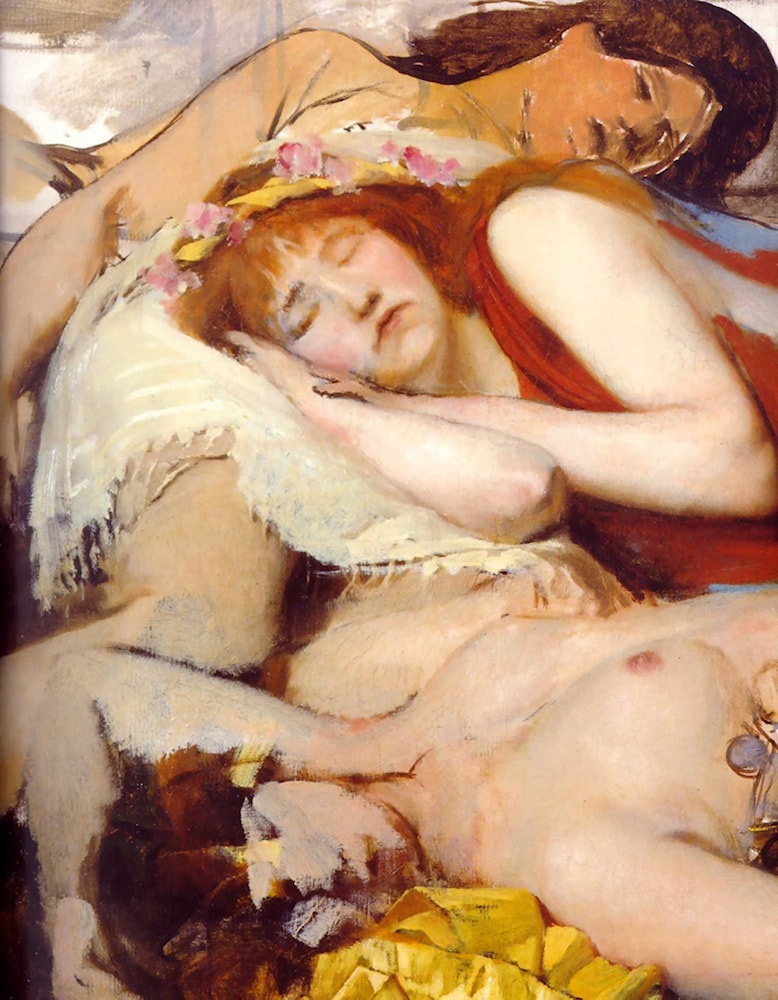
Here we can see a combination of nearly complete and barely started figures and body parts. You can see clearly that each figure starts out not as a series of clearly-defined fine details and key points easy to see using an optical device, but as a fuzzy generalization which got successively refined until it looked very realistic. The lack of sharp starting details, the use of colors, and the layering of successively refined details all point in the direction of showing that this painting was both painted by "eyeballing it" and was very much in the style of Sir Lawrence Alma-Tadema's other work.
6. The Development of Sculpture
Sculpture became much more realistic and lively at just the same times as drawing and painting did, and there were numerous stylistic similarities too. Does Hockney think that this is proof that the Old Masters of sculpture also used optical aids? He doesn't attempt to explain this or how it would be possible to "eyeball it" when making a sculpture but not when drawing or painting. We even have cases of sculptures being made based on images originating in paintings. For example, Henri Godet made this sculpture based on Bouguereau's The Abduction of Psyche.
If it is possible to make a realistic statue without optical aids, why not a drawing or painting? Hockney never explains how this could be possible. Not only did sculptors achieve high levels of realism, but the changes in styles over time were rather similar to drawings and paintings of the day despite the inapplicability of optical aids to the production of realistic sculpture. Interestingly, changes also happened in the form and quality of music and literature at the same time as things changed so much in painting and drawing as well. If Hockney were to put a sequence of pictures of sculptures up on his "Great Wall" he would see an identical pattern in successively improving quality of representations over the centuries ...
If we can't conclude that optical aids or equivalents resulted in improvements in sculpture over the ages, why should we conclude that the same evidence of similar developments in style and design justifies a belief in the same thing with drawing and painting? Hockney is certainly not unaware of this trend in sculpture and he even apparently has some examples of sculpture (reliefs) on his "Great Wall". He just ignores the data because it doesn't support his predetermined conclusion.
7. Self-Portraits
Most major painters made some number of self-portraits during their careers, and this presents a serious problem for Hockney. There's no way to be on both sides of a camera obscura or camera lucida, so how does Hockney explain the existence of such works? Surely he knows that they exist, and they are clearly not done by other artists or they would be obvious fakes, but he just ignores them as he does all counter-evidence.
If they were able to pull off even one such painting it would invalidate Hockney's basic assumption; that realistic painting without optical aids is impossible and the rest of his argument falls as well.


Each of these is both clearly recognizable as the image of the artist (which we know from paintings by others and photographs) and each is clearly recognizable as a painting in the typical style of that artist which is as identifiable as a fingerprint. Hockney doesn't explain the existence of self portraits of this kind and their existence contradicts his central thesis.
8. Photographic Studies
In the case of some 19th and 20th century artists, we have some records of the models used because some of them used photographs either to document their models or as "mechanical studies" for their paintings. While it is clear that these photographic records were of the models who posed for the paintings in question, it is also clear that the artists were not slavishly copying the images. Maxfield Parrish in particular made heavy use of photographic studies and given the amount of time it took to create his paintings, this was very helpful to him since it didn't require his models to be present for hundreds of hours or for the sun to stop moving across the sky. Let's look at a few examples.
If we look at the edges of the painting (in red) superimposed on the photo (in blue) it is clear that while the images are similar, they aren't even close to having been traced. The body is a little more slim, the belt is in a different position, the fabric folds don't match, and the positioning of the arms is different.
Another subtle difference is the way that lighter areas fall on the photograph as compared to the way it falls on the face of the girl in the painting. Rather than there being an upside down "L" of bright highlights on the nose, the painting has a much softer coloration and darker lines in rather different places than would have been derived from tracing the photographic image.
To the right we have another example of a photographic study, this time by Dante Gabriel Rossetti . In this case it is clear the Rossetti used this photograph of Jane Morris in his preparation for his painting, but there' no question that he didn't trace the photograph in order to create his painting and it isn't even necessary to look at the overlaid images to see this.
Obviously we don't have photographic studies for every painting ever made, but Hockney didn't attempt to make this kind of analysis of available photographic studies. If they consistently showed that the artist did not slavishly reproduce the photographic image by tracing it, the evidence would cast considerable doubt on his theory, and that's why he didn't do (or even discuss) this kind of examination.
9. The Han van Meegeren Case
In the mid-20th century a Dutch artist was caught selling very high quality forgeries of (supposedly unknown) Vermeer paintings. He had great success at getting these paintings authenticated for years even though he painted them himself. In his court case where he stood accused of collaborating with the Nazis by selling them "cultural treasures". In his defense he proved that he had forged the paintings he sold to high Nazi officials by demonstrating his ability to make fake "Vermeers" before the court. Hockney uses Vermeer in particular as an example of an artist who "must have" used optical aids to paint as he did, but was this a necessity? Clearly van Meeregen was capable of painting "Vermeers" without a camera obscura, so why should we think that Vermeer couldn't paint them without such aids? Even if it turned out that Vermeer did sometimes or even always use optical aids, we can't conclude that he did so because that is the only way to make paintings that looked like his.
What I'm Not Saying
Just to be clear, I should emphasize a few things that I am not saying about the methods of painters from the past. I am not saying that none of them ever experimented with optical projection devices. Clearly many of the more scientific-minded ones (such as da Vinci for example) did have such tools and used to them to better understand how light worked and how certain kinds of images can look when projected onto a flat surface. Not only is this true, but it has never been a secret. It has just never been the primary way that good artists have done their work.
I am also not saying that no great artist of the past (or even the present) ever made a drawing using a camera obscura or camera lucida either in planning or even in execution. There is indeed evidence that some of them did experiment with this kind of drawing. My objection is that Hockney has taken this minor bit of technology and for whatever reasons (more on this below) has turned it into a dubious theory about how all excellent realist work was created.
Some might interpret my comments here as a condemnation of any use of optical aids in the production of drawings or paintings, so let me clarify my position on that topic as well. There is nothing inherently wrong with using optical aids to make drawings or paintings (or photography for that matter). Such tools have limits to their usefulness and they can't substitute for skill if it is not present, but in and of themselves they are merely tools, not inherently a source of good or bad results. Art works should be judged by the results rather than the methods that went into making them, but this recognition doesn't mean that all methods are equal in their ability to create great art, or that it's OK to lie about the facts.
The theory that the Old Masters used optical tools as their primary way of making their masterpieces, while false, wouldn't have motivated me to write this article if that's all Hockney had to say. It was the insinuation that they did so because they didn't know how to draw and paint realistic images any other way that moved me to action. The implication that contemporary realist artists must not be able to draw and paint either, and that their teaching and publications were a sham was an outrage as well.
I don't believe that errors on the scale of Hockney's can be made honestly, but that doesn't mean that there is no reason for his attraction to these ideas. It is always hazardous to guess about the private thoughts of others, and even more so for those of people one has not even met, but I have met quite a few people who accept ideas like his, so I don't mind going out on a limb just a bit. So with that caveat let's look at some likely factors in Hockney's thinking.
Hockney isn't a very competent artist. He can't draw well, paint well, or convey his ideas well through his work. That is pretty obvious if you look at his photo collages and drawings. Despite this lack of great artistic success, he is a minor art celebrity and this must wear on his self-esteem. While he can't paint or draw better than a beginning art student he is hailed as an expert and a genius in some quarters. It would be attractive to him to believe this, but the contrast between the quality of the Old Masters and his own work is so dramatic that it must cause him some distress. How is it that he can rationalize his own fame and fortune with the lack of technical skills and aesthetic impact of his own work? There are basically two ways of making sense of this. One is to elevate his own work to the level of the Old Masters by some theory that values some aspect of the work that they both share. Many modernist artists do this by concocting mystical theories that place some indefinable aspect of the work at the center of its value. This is what I usually refer to as "The Emperor's New Clothes" approach, and it relies on the implication that if you cannot see the important mystical qualities of the work in question that doesn't mean it's not there, it just means that there's something wrong with you.
The other approach is to pull down the Old Masters by undercutting their value and demonstrating that they were no better than contemporary talentless hacks. Often this is done by sneering at them as being "out of date", "boring", "old-fashioned", or "not relevant to the modern day", and ignoring all of their genuinely excellent qualities. At other times this is done in the name of egalitarianism. Whatever their reasons for promoting egalitarianism, those who champion it strongly dislike any activity in which some people (through superior talent, practice, experience, or training) can gain results far beyond the norm. Such people generally dislike serious athletic competitors, the rich and famous, and the activities in which they gained their fame. Typically they claim that it is somehow unfair or unseemly for anyone to be seen as being much better than anyone else at anything. Among these people there is a long tradition of theories that attempt to explain away superior performance by claiming that it is a result of sinister intent (e.g. the rich are that way because they steal from the poor), natural qualities unrelated to choice or training (e.g. athletes and very attractive people are nothing but biological freaks of nature), social forces unrelated to the individual (e.g. white people have everything handed to them on a silver platter by society), cheating, or even that there are in fact no such distinctions at all and the all differences are an illusion (e.g. people in wheel chairs are not any less capable than those who can walk, they are just "differently abled"). In the 20th century there has been a strong current in arts education to promote the idea that "anyone can make great art" and that "no art is actually better than any other". This is a very appealing idea to these extreme egalitarians. Such people strongly gravitate to theories that reassure them that the apparent differences between them and their peers is illusory, small, or because of lies and immorality of those who appear to have done well. Hockney summed up the same sentiment when in a BBC interview he said of the Old Masters, "They are not demi-gods way up there."
Hockney attempts a curious fusion of these approaches in his book. He both attempts to erase the distinctions between his rather talentless tracing and collages and the work of the Old Masters, but he also tries to bring them down to his level by denying their skills and technique and claiming that they were no better than he is today (because they presumably used the same techniques). Rather than feeling intimidated by the far superior work of the Old Masters, he has apparently decided to do something about it, and his whole project is apparently an effort to accomplish this goal. He has managed to tie together his ego-driven desire to tear down the Old Masters with his own inability to draw and paint well by placing that inability at the center of his argument. Hockney says that it must have been impossible for them to draw and paint well because he could not do so himself!
Beyond Hockney's need to both associate himself with the methods of the Old Masters and to bring them down, he has another need. Throughout his career, Hockney's successes have been less about his paintings and photographs than about his personality and celebrity. One doesn't become famous by taking conventional views on things. After all, if he had published his book with an explanation of the same old approaches rather few people would have purchased it and certainly few would have commented on it or him as a result. On the contrary, the more outlandish the claims and the more clearly unjustified the conclusions, the more controversial and the more famous Hockney becomes. It is also clear from the extensive collection of correspondence that plenty of his friends were all too eager to jump on the bandwagon and be seen as part of his iconoclastic (not to mention famous) gang of revolutionaries. Modernism has always put a premium on the "new" and "revolutionary" and in order to stay on the cutting edge as a cultural "leader" one must not delay too long before jumping onto any passing bandwagon.
Iconoclasm today brings with it fame, popularity, and money, and what better way is there to smash icons than to claim that the Old Masters couldn't draw and paint realistically?
There are other targets a little closer to home who intentionally or not are targets of Hockney's attacks. While the people Hockney explicitly demeans are long-dead artists, contemporary realist artists stand accused by Hockney's arguments. If he is right and the Old Masters were lying about their methods because it is impossible to draw and paint realistic images, then surely the contemporary realists who claim to have learned the methods of the Old Masters must be lying as well, and must not know how to "eyeball it" either. If we accept Hockney's theories then we must conclude that if they claim the ability to "eyeball it" when they paint realistic images they must be so arrogant as to think themselves superior to all the greatest painters in history, and therefore they can be written off as dishonest and arrogant kooks claiming to be able to do the impossible. Over the past few years there has been a growing movement outside the mainstream of academic and government-funded art institutions in the direction of better training and better quality realist art, and there has been a strong reaction against it from the modernist camp (you should read the language in some of my emails!), and perhaps this is a preemptive salvo in the conflict. Intentionally or not, Hockney's claims constitute a challenge to the honesty and competence of a whole generation of living artists. These artists can easily prove their skills and honesty if they could manage to get even a sliver of the press attention that Hockney has whipped up. I don't know whether it's an act of public relations genius or a lucky accident, but Hockney has managed to make his case in the press and academia against contemporary realist artists without even mentioning them and therefore without giving them an opportunity to respond.
One aspect of Hockney's arguments that is subtle but important is that he is always careful not to actually draw any clear conclusions in his book or to come right out and say what he's thinking. This might seem a little odd, but it is a pattern I see over and over again among people like Hockney who make attacks against excellence and truth. Their goal is not really to discover the truth, but to cast doubt on it. They don't seek to develop new and useful techniques, but merely to cast doubt on the ones that have already been discovered. This is a difficult enough task to accomplish as it is, so the charlatans usually refrain from making clear and distinct claims of their own that can be directly disproven. Because of this, critics are forced to read between the lines (which isn't very hard) and try to pin the scoundrels down and get them to admit their own points clearly. This is also consistent with the fact that Hockney for all of his efforts has still not demonstrated that he can create paintings that look anything like those of the Old Masters by tracing optical images. In fact, at a New York University conference organized to discuss his theories Hockney said "The paintings I agree are absolutely magical, we will never actually know how they were done." After all his work, research, writings, and conferences Hockney himself claims not only that he doesn't know the answers, but that nobody will ever know. This really gets to the heart of his program. He is not seeking the discovery of truth or the improvement of methods, he is cultivating ignorance and doubt about the work of the greatest artists in history, the greatest living artists, and all artists yet to come. Unfortunately, he has powerful allies in the halls of academia and the press who are already working hard to broadcast that ignorance and doubt into every classroom, television set, and museum in the world.
What has been the reaction of the press and academia and why?
Someone who didn't know better might think that institutions with the job of intellectual watchdogs would pick up on the obvious flaws in Hockney's point of view and expose them. Of course, given the intellectual bankruptcy of academia and the press, they'd be wrong. In schools we are already seeing Hockney's theories taught, not as a popular controversy, not even as established esoteric facts, but as the first and most important things to be understood about the Old Masters. For example, one syllabus begins a discussion of art history through the perspectives of Marx, Derrida, and Hockney, and one online research paper regurgitates Hockney's arguments in a demonstration that the students "gets it". We recently have been witnessing a similar trend in the way students are taught about Thomas Jefferson. At one time students were taught that his authorship of the Declaration of Independence was the most important thing to know about Jefferson. Today that seems to be hardly mentioned as they rush to discuss gossip about whether or not he had an affair with a black slave. Rather than dispute or even discuss Jefferson's ideas, they merely make them irrelevant by focusing on a scandal that crowds out all other considerations. We owe the next generation an education that conveys an accurate understanding of what came before it, and Hockney's kind of obscuration is a sad legacy and it has already taken root in the groves of academe. It needs to be uprooted before it can cause more damage.

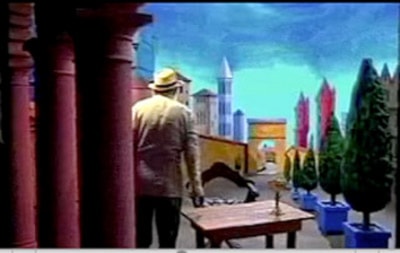
This is exactly what we are seeing in the press as well. For example, the BBC created a lavishly produced documentary on Hockney's theories (which you can see parts of online if you wish) in which they elaborately staged a renaissance village and filmed Hockney going through the motions that he ascribes to the Old Masters. This is not presented as a controversy, but as a fact. CBS also created a glowing documentary to buttress Hockney's theories and public image which failed to ask hard questions and referred to him as "one of our greatest living artists" (and the BBC referred to him as "our most celebrated living artist"). The Guardian and the New York Times of course have had approving words for his theories as well, and now only subtly mention that there's even any controversy associated with his theories. Have they covered anything about the actual methods of the Old Masters? Have they covered the accomplishments of contemporary realist painters either? Have they covered the arguments against his theory? Of course not. They are generally motivated by the same kinds of extreme egalitarianism and envy of those who can accomplish great things as Hockney is, and they are more than willing to haul water for his cause.
It is not only big institutional media and academia that has been propping up Hockney's project. Several individuals have collaborated with Hockney in the preparations for his book (he includes volumes of his correspondence in the book). While one of his conspirators, noted art historian Martin Kemp did occasionally point out errors in Hockney's proposals, he always did so in a rather apologetic manner, as though discovering errors in Hockney's facts and reasoning was something to be ashamed of. Far worse was Charles Falco, a physicist with apparently no prior interest or understanding of art who was positively nauseating in his sycophancy, ever eager to associate himself with whatever errors Hockney may dig up. No doubt legions of additional supporters will spring forth as the need arises to put their reputation behind Hockney's cause. They would do better to think for themselves and stick to the truth even when untruth seems to be the flavor of the week.
One would at least think that in the publishing world there might be someone there to stop the shenanigans, but they are apparently on the other side as well. Consider this tale from art historian James Elkins from his writings following up his appearance at the New York University Conference on Hockney's theories:
I am astonished and depressed at the amount of publicity Hockney's new interest is getting. The publication is lavish. I bet most of us on these panels wish we could get production values like that. And I think it's true that no matter how many doubts art historians raise, and how well we argue, we will all lose, because the publicity on the other side is just too great.
Recently I talked with someone at Thames and Hudson (who originally published the book in the UK), who expressed some skepticism about Hockney's thesis, but said that "at least" people who don't know anything about the Old Masters might encounter them in this book.
Now a publisher certainly does not have to believe in everything she publishes, but that reasoning seemed especially unfortunate. The book makes it appear as if optical devices are what make the Old Masters interesting. That wouldn't be a problem in an academic monograph, but this book will be read much more widely, so it's unfortunate that Hockney has not tried to tie the optical "secrets" and "tricks" to the paintings' more complex and demanding meanings. (It is also unfortunate, but typical, that the book does not have even the very simple calculations that Falco uses to make his points - though that also goes to the point of the kind of reader that is expected.)
So why will we all lose? Because there is a tremendous desire on the part of readers, journalists, and people who visit museums to understand the Old Masters once and for all. The optical tricks listed in Hockney's book promise to make that possible. Each trick also helps demote the priesthood of academic interpreters and bypass the often opaque or irrelevant labels that curators normally provide. People like James Marrow and Walter Liedtke (who connected the optical themes to deeper historical meanings) are the worst nightmare for viewers who want their art accessible and relatively free of context. But I wonder, as the reviews of the conference begin to appear, how many journalists will note that the satisfaction of knowing that a given painting was accomplished with the aid of a trick is a very superficial satisfaction, and that it leaves the value, the mystery, and the meaning of the painting entirely untouched. It is far more satisfying just to know something once and for all: hence, we will all lose. I will even make a prediction: in twenty years, by 2020, Hockney's claims will be part of first-year art history textbooks regardless of the critical consensus.
I think Elkins is much too optimistic. Hockney will be in first year art history textbooks by 2006 if they aren't there already. As of this writing (April 2004), a Google search for "Hockney" and "Syllabus" turns up 429 entries. We will see how that number changes over time.
Conclusion
Whatever the reasons for his promotion of the idea that it's impossible to make excellent realist paintings without optical aids may be, it should be clear that Hockney's conclusions are completely unjustified. It amounts to little more than a conspiracy theory that attempts to explain away centuries of great art. His denial of the existence of artists, the quality of their work, their teaching, books, and eye witness reports and even the possibility of the existence of people who can draw and paint tells us little about how art is made, but volumes about Mr. Hockney and his hatred of excellence in the arts. Unfortunately for them, all of the rewriting of history, fallacious arguments and sophism they can muster will not change that fact in the least.
Hockney has chosen a very difficult kind of argument to justify his conclusion, namely that it is impossible to paint and draw the way everyone thinks that the Old Masters painted and drew. This means that he not only needs to show that it is possible to make a realistic drawing or painting using optical aids (something he didn't really demonstrate in his book), but that nobody can paint realistically any other way. That means that if any contemporary artist can be demonstrated to paint and draw well without optical aids, Hockney's basic premise (that we need to figure out some new explanation for the Old Masters because the old explanation doesn't work) can't hold water.
Straining the credulity of an audience is difficult, but not very difficult if their wits have been dulled by a steady diet of revisionism, relativism, and modernist baby talk. That a theory can pass such non-existent levels of scrutiny does't say much about its credibility. While it is likely that Hockney's theory will go on to gain converts among the young, gullible, and self-deluded, it will also serve to mark those who have accepted it as gullible and foolish. In the end, I think that such silly stories should concern us no more than grocery store tabloids breathlessly explaining the exploits of Bigfoot and underground UFO bases should concern serious journalists and historians. We can expect the artistic equivalents of the tabloids (such as CBS, the BBC, and the New York Times) to continue to spread the news about Hockney's "great discoveries", but the end result will not be the creation of great works of art, or any useful information. It will only make those who swallow the pill less capable of creating great art and less capable of even appreciating it or identifying it. The future belongs to those who know the truth and know how to put it to productive use, not to those who are too fascinated with the latest news from planet Vulcan to pay attention to the facts here on Earth.
Articles on other websites
- David Stork's FAQ on the Hockney Controversy
- James Elkins' Art, Optics, and the Fear of Death
- Lawrence Weschler's Through The Looking Glass
- Article on Snarkout about the Camera Obscura
- Ross Woodrow provides information on the camera lucida
- Getty Museum on the Hockney Controversy [A Conversation Between Lawrence Weschler and David Hockney]



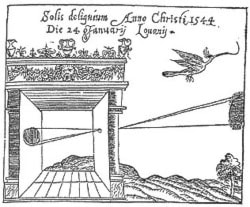
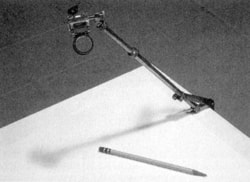
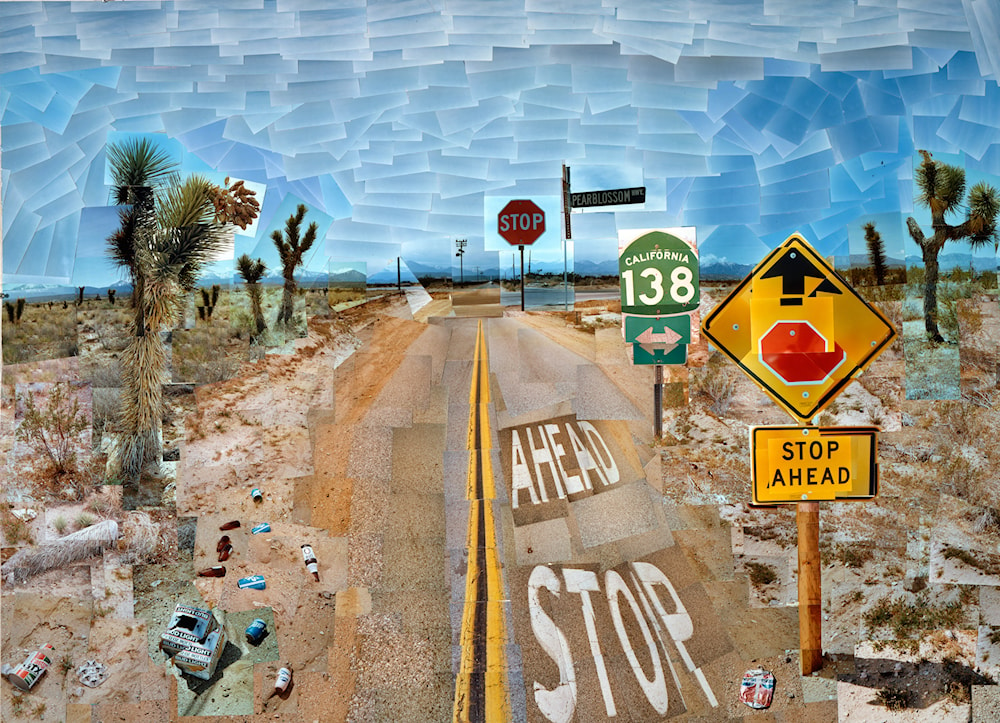
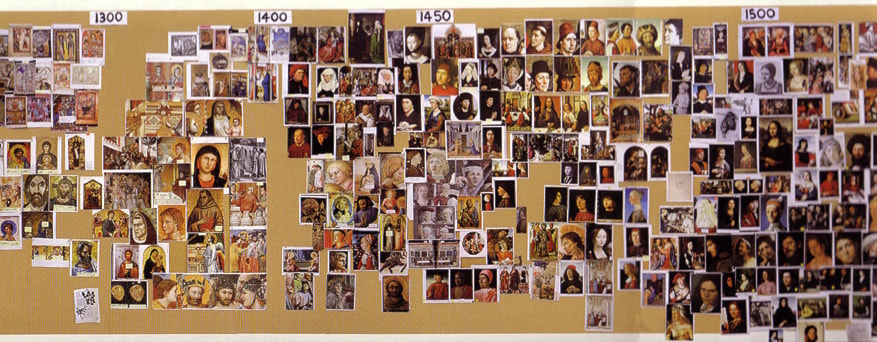


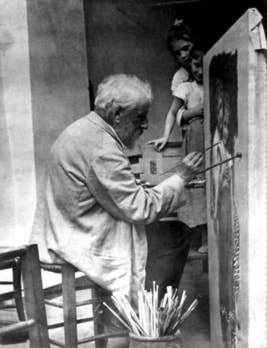

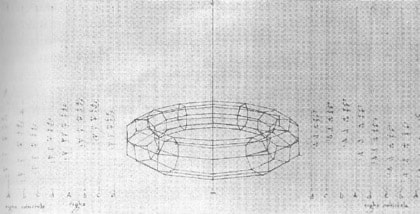




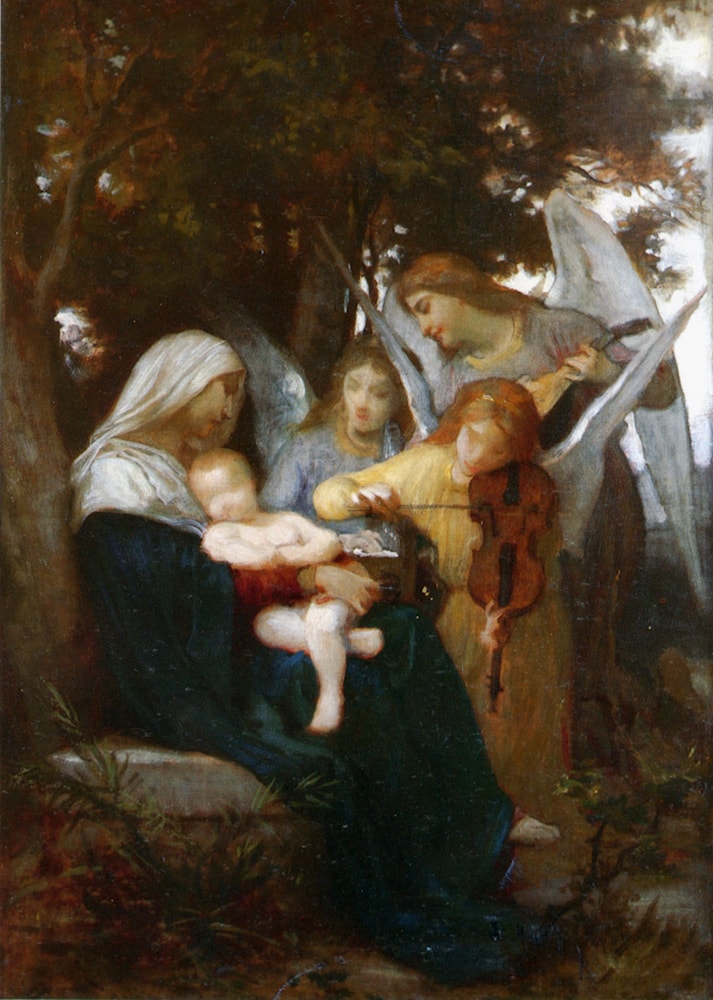


Large.jpg?w=300)







